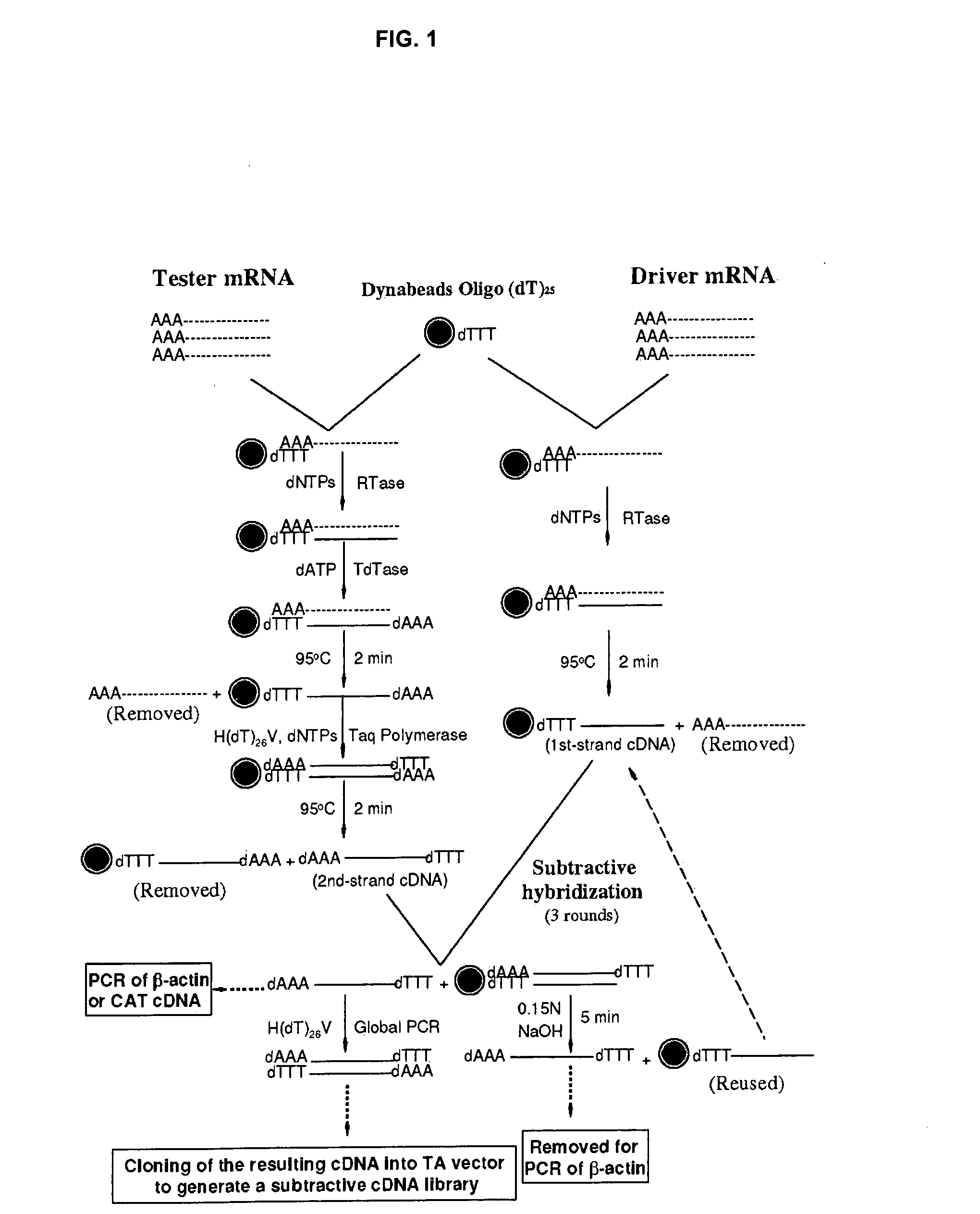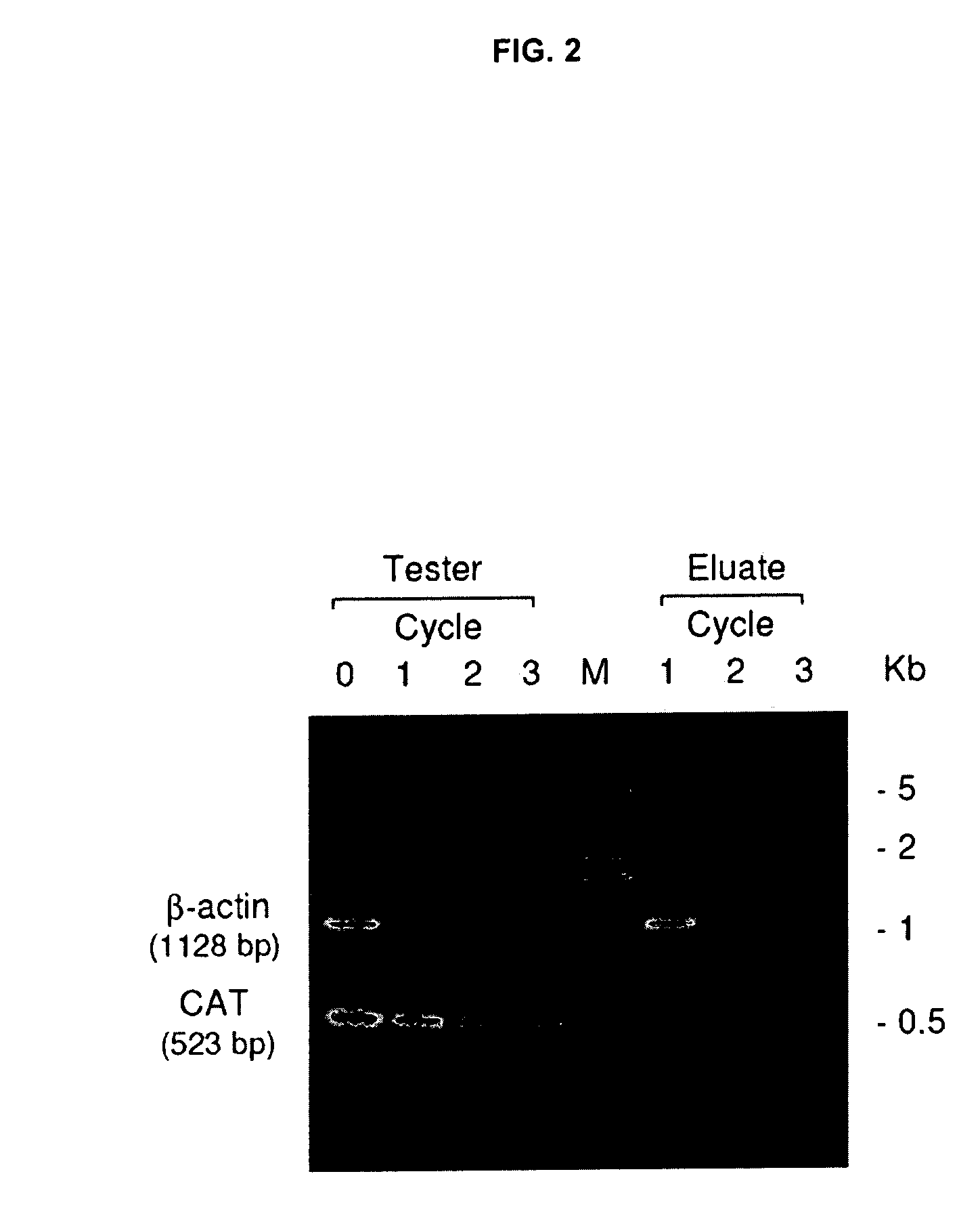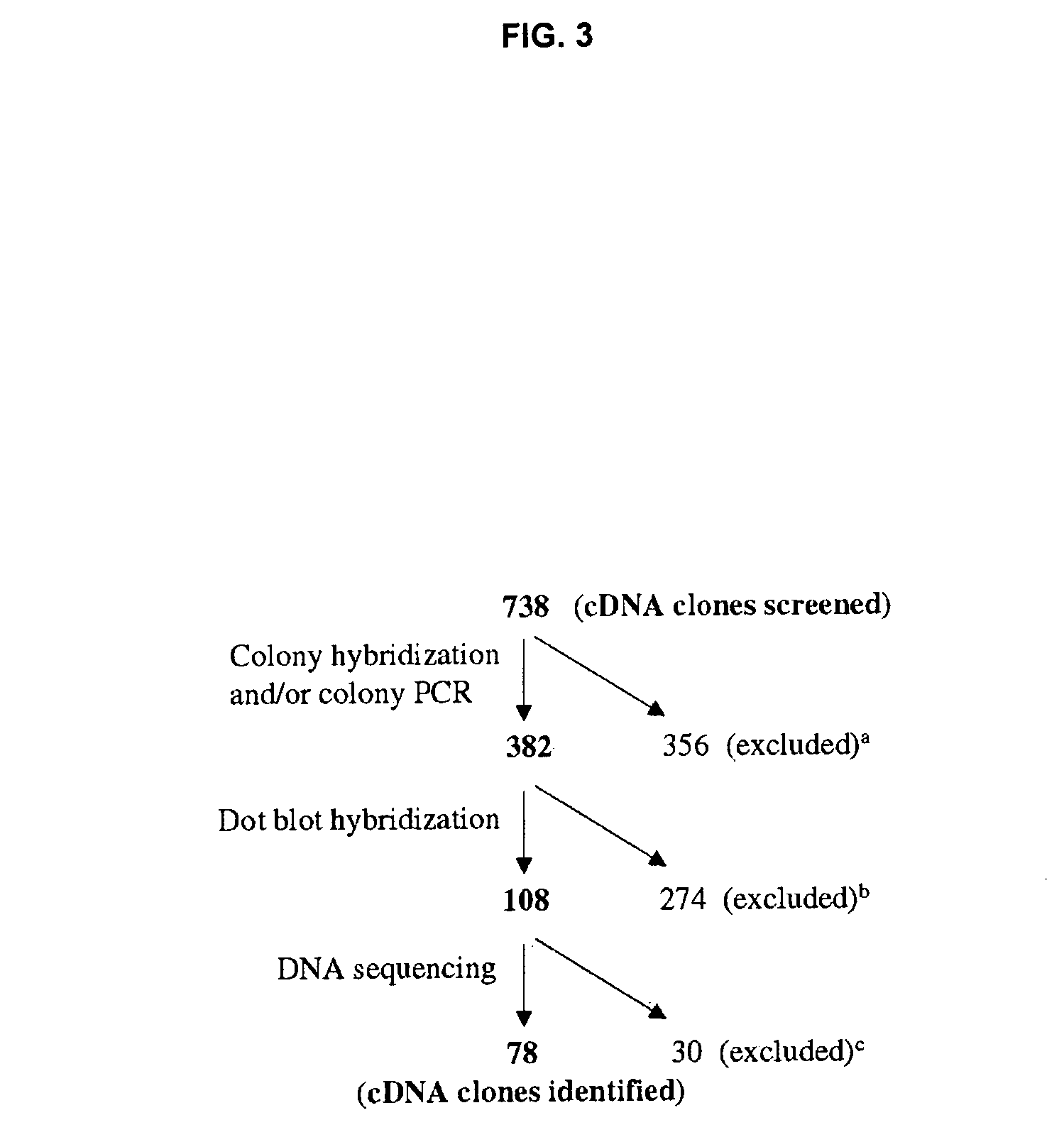Methods and probes for diagnosing a gynaecological condition
a gynaecological condition and probe technology, applied in the field of dna sequences, can solve the problems of inconvenient modalities for assessing inconvenient diagnosis by physical examination, and inability to accurately diagnose the extent of endometriosis
- Summary
- Abstract
- Description
- Claims
- Application Information
AI Technical Summary
Benefits of technology
Problems solved by technology
Method used
Image
Examples
example 1
Materials and Methods
[0077] Tissue specimens. Tissue biopsies of pelvic endometriosis and normal uterine endometrium were collected in pair from 15 patients undergoing laparoscopy or hysterectomy for endometriosis (Table 2). Portions of the tissue specimens were stored in liquid nitrogen immediately for this study while the remaining were used for histo-pathological diagnosis. The patients either had never received any hormonal treatment or had ceased any hormonal medication for at least 6 months before surgery. The patients were categorized by menstrual phases and severity of endometriosis. The proliferative (days 4-14) and secretory (days 16-28) phases of menstruation was determined by the patients' menstrual history and histo-pathological assessment of the endometrium. The severity or stage of evolution of endometriosis was based on surgical pathological findings according to the revised American Fertility Society classification system (Revised American Society for Reproductive ...
example 2
Subtractive Hybridization, Library Construction and Screening with RNA Samples from Paired Endometrium and Endometriosis Tissues
[0089] The efficacy of the subtractive protocol was confirmed experimentally (FIG. 2). The subtractive hybridization in two directions to enrich the genes over-expressed or underexpressed in endometriosis tissue generated a large number of cDNA clones. 738 colonies were screened by colony PCR and / or differential hybridization to remove those false positive clones, and duplicate or equally expressed genes. 108 cDNA clones were identified for further study with DNA sequencing (FIG. 3).
example 3
DNA Sequencing Analysis, Gene Identities and Chromosome Mapping
[0090] DNA sequencing analysis through the GenBank databases for 108 cDNA clones isolated from the libraries revealed that 78 contained different cDNA inserts while the other 30 were duplicate clones or had the same inserts with different orientation and were therefore excluded. Of 78 cDNA clones, 48 were identical with or very similar to known genes in the GenBank databases, and 25 were matched to unknown genes, including uncharacterized human or mouse mRNA and hypothetical proteins. The remaining 5 clones matched human genomic sequences with no similarity with any known cDNA or mRNA, i.e. novel genes. The 48 known genes included 5 genes for extracellular matrix / cell adhesion proteins, 8 for ribosomal proteins, 6 for transcription regulators, 6 for RNA processing and pre-RNA splicing factors, 8 for signaling intermediates, 2 for cell cycle, 3 for GDP / GTP binding proteins, 4 for metabolism and 6 for other cellular funct...
PUM
| Property | Measurement | Unit |
|---|---|---|
| Tm | aaaaa | aaaaa |
| volume | aaaaa | aaaaa |
| volume | aaaaa | aaaaa |
Abstract
Description
Claims
Application Information
 Login to View More
Login to View More - R&D
- Intellectual Property
- Life Sciences
- Materials
- Tech Scout
- Unparalleled Data Quality
- Higher Quality Content
- 60% Fewer Hallucinations
Browse by: Latest US Patents, China's latest patents, Technical Efficacy Thesaurus, Application Domain, Technology Topic, Popular Technical Reports.
© 2025 PatSnap. All rights reserved.Legal|Privacy policy|Modern Slavery Act Transparency Statement|Sitemap|About US| Contact US: help@patsnap.com



